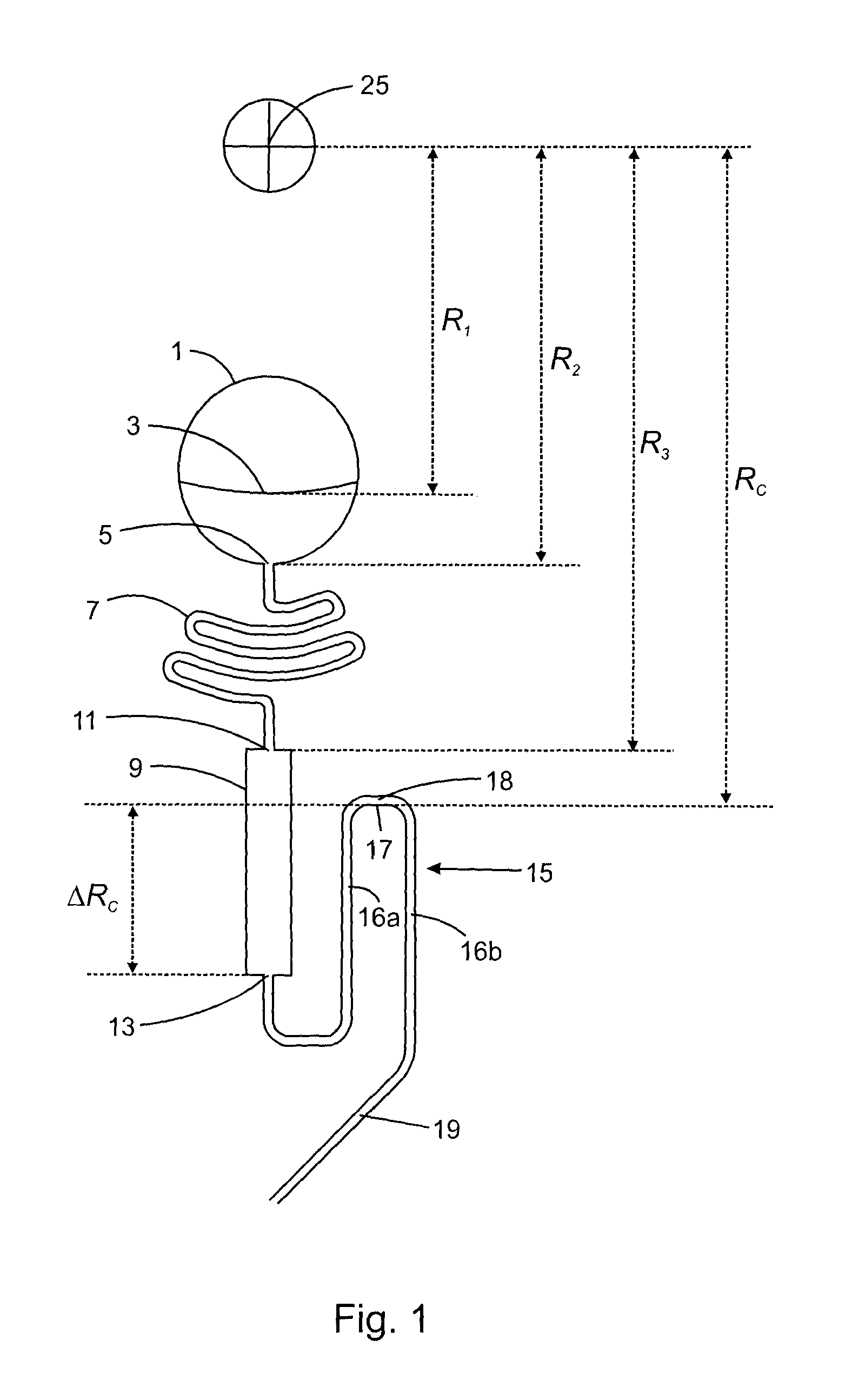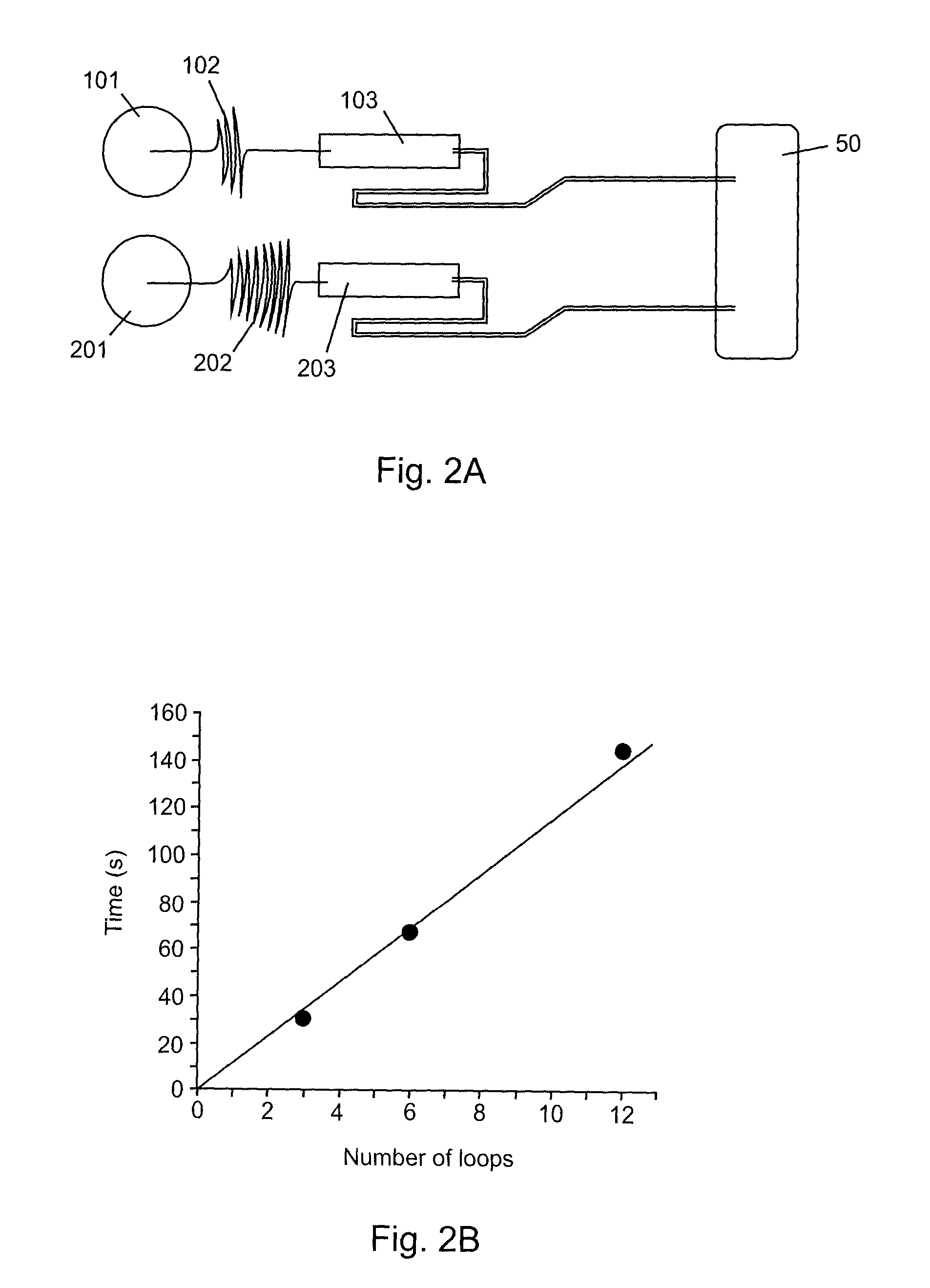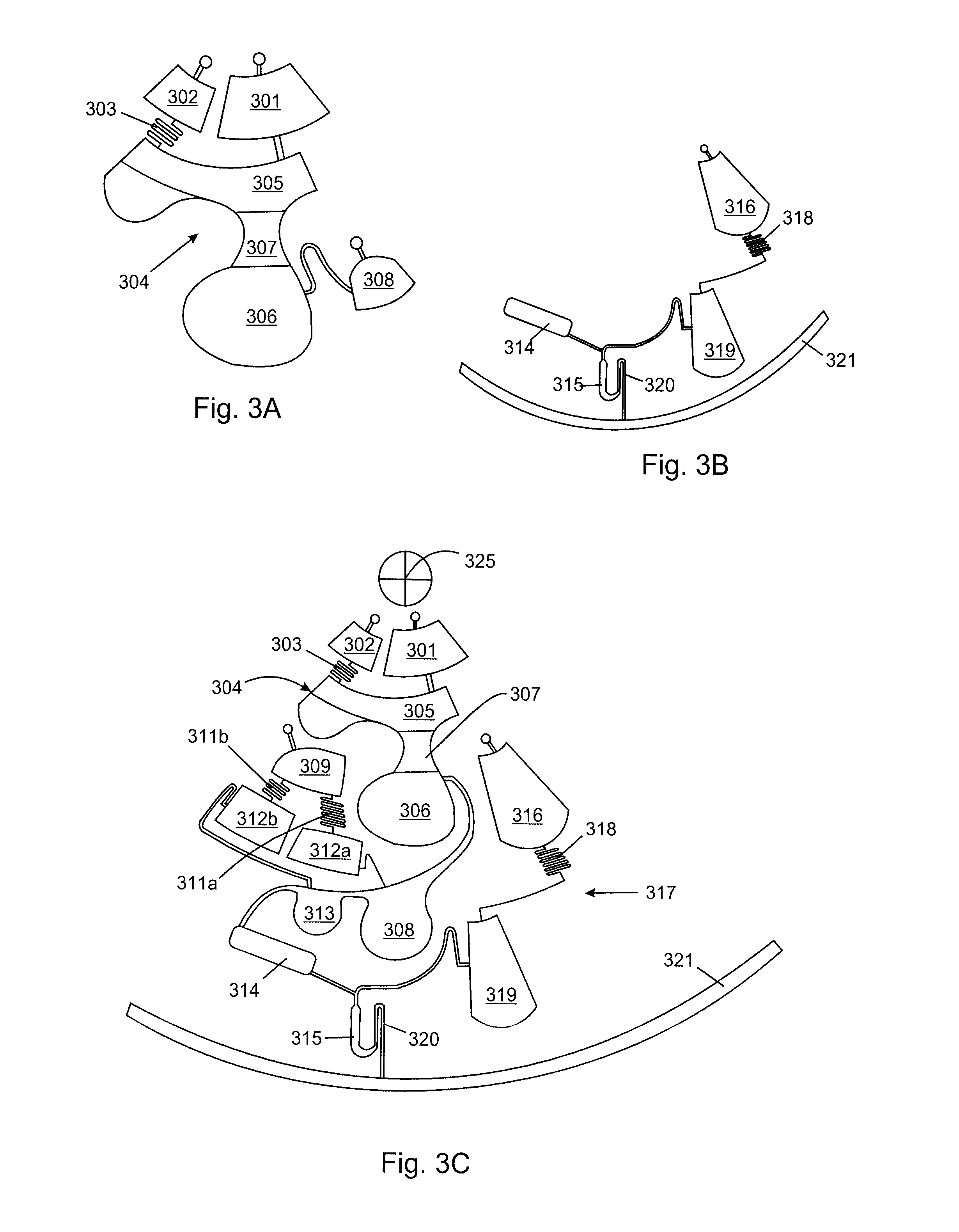Centrifugal microfluidic platform
- Summary
- Abstract
- Description
- Claims
- Application Information
AI Technical Summary
Benefits of technology
Problems solved by technology
Method used
Image
Examples
Embodiment Construction
[0042]Referring to FIG. 1, a temporization and metering circuit in accordance with the present invention is depicted that may be used in a centrifugal microfluidic device. The temporization and metering circuit comprises a hydrodynamic resistance element in the form of serpentine channel 7 in fluid communication via chamber inlet 11 with a siphoned chamber in the form of metering and delay chamber 9 in fluid communication via chamber outlet 13 with siphon 15. The rate of fluid flow from fluid reservoir 1 at reservoir outlet 5 is controlled by the hydrodynamic resistance provided by serpentine channel 7. Since the serpentine channel drains directly into metering and delay chamber 9, the filling time of chamber 9 is also well controlled by the geometry of the serpentine channel. As the level of the fluid in chamber 9 reaches siphon crest 17, the fluid is drained entirely from chamber 9 through siphon 15 into a microfluidic circuit (not shown) in fluid communication with siphon outlet ...
PUM
| Property | Measurement | Unit |
|---|---|---|
| Length | aaaaa | aaaaa |
| Centrifugal force | aaaaa | aaaaa |
| Flow rate | aaaaa | aaaaa |
Abstract
Description
Claims
Application Information
 Login to View More
Login to View More - R&D
- Intellectual Property
- Life Sciences
- Materials
- Tech Scout
- Unparalleled Data Quality
- Higher Quality Content
- 60% Fewer Hallucinations
Browse by: Latest US Patents, China's latest patents, Technical Efficacy Thesaurus, Application Domain, Technology Topic, Popular Technical Reports.
© 2025 PatSnap. All rights reserved.Legal|Privacy policy|Modern Slavery Act Transparency Statement|Sitemap|About US| Contact US: help@patsnap.com



